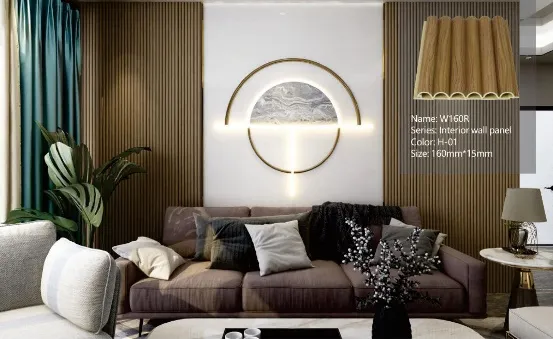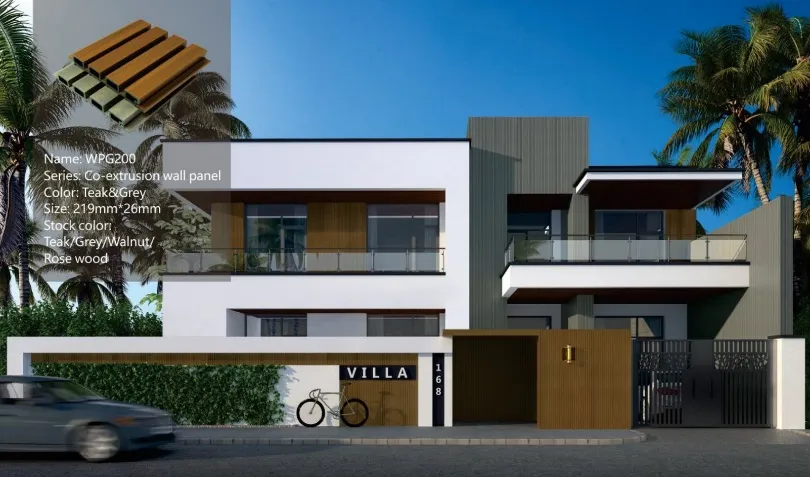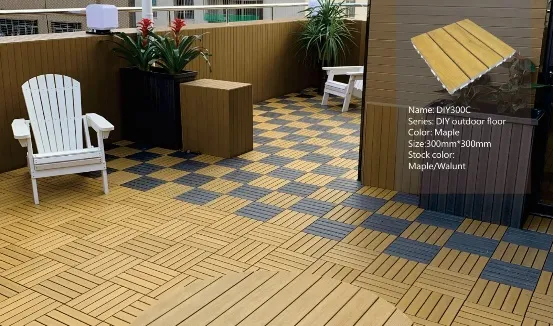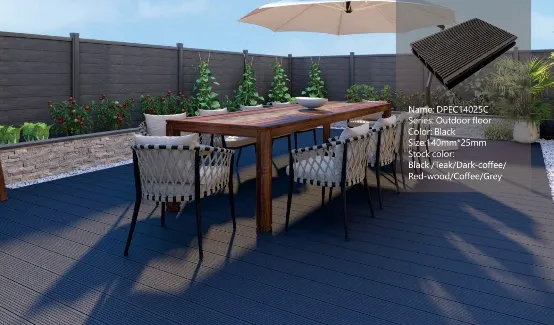
The king of corrosion resistance: the excellent performance of WPC wall panels in coastal high-salt environments

When Salt Meets Surface
Picture this: You're sipping coffee on your seaside balcony, breathing in that invigorating ocean air. It's paradise – until you notice rust creeping up your metal railings, warping in your wooden deck, and corrosion eating away at your exterior walls. That salty breeze? A silent assailant to conventional building materials.
In coastal regions, salt isn't just seasoning; it's nature's rust accelerator. With climate change intensifying extreme weather events, the challenges facing coastal homes and commercial structures are mounting – and traditional materials are buckling under pressure.

Meet the Coastal Defender: WPC Technology
WPC wallboard stands as a marvel of material science. Wood Plastic Composite (WPC) blends the earthy warmth of wood fibers (usually 50-70% content) with polymers like polyethylene, polypropylene, or PVC. But this isn't just mixing – it's molecular synergy.
The Salt-Proof Recipe
- Polymer Matrix creates an impermeable shield against salt penetration and moisture absorption
- Wood Fibers provide rigidity, thermal stability, and natural appearance
- Special Additives include UV inhibitors, stabilizers, and bonding agents creating a fortress against coastal elements
Imagine concrete reinforced with steel bars – that's the principle of WPC but at a microscopic level. Cellulose fibers from wood are encased in thermoplastic polymers. The plastic component acts like raincoat for the wood fibers, preventing saltwater from ever reaching them.

Why Salt is Kryptonite to Traditional Materials
To appreciate WPC's heroics, consider what coastal conditions do to conventional materials:
- Timber: Salt absorption causes swelling, warping, and dry rot. Chlorides accelerate biological decay
- Metals: Saltwater initiates electrochemical reactions leading to rust (oxidation). Stainless steel suffers crevice corrosion
- Concrete: Salt ions penetrate and initiate "concrete cancer" as embedded steel reinforcements rust
- Vinyl/PVC: Degrades under UV-salt synergy, becoming brittle in under 5 years
In tropical coastal resorts, wood decks might need replacement every 3-5 years. Metal fixtures become pitted eyesores after two rainy seasons. But WPC wall panels laugh in the face of salt spray.

Scientific Proof: WPC vs. Coastal Aggression
Independent laboratories have put WPC panels through hellish coastal simulations. The ASTM B117 Salt Spray Test subjects materials to constant salt fog at 95°F (35°C). Results after 2000 hours:
| Material | Appearance Change | Weight Loss | Structural Integrity |
|---|---|---|---|
| WPC Panels | None | 0.01% | Full strength |
| Pressure-Treated Pine | Severe warping | 11.3% | 75% loss |
| Powder-Coated Steel | Rust spots | 4.7% | Compromised |
This resilience translates directly to real-world longevity. In Florida's hurricane-prone coastlines, WPC installations maintain integrity for 15-25 years versus 5-8 years for treated wood. The "lifecycle math" reveals massive savings despite higher initial investment.

Beyond Salt Resistance: The Unexpected Benefits
While corrosion resistance is the headliner, WPC wallboard brings an entire supporting cast of advantages:
The Holistic Performer
- Temperature Stability – Expands/contracts only 1/8th as much as wood in tropical heat cycles
- Fire Resistance – Achieves Class B rating (unlike wood's Class C/D), critical for coastal wildfires
- Acoustic Insulation – Reduces exterior noise by 50% compared to metal or cement cladding
- Insect Immunity – Termites sniff and turn away (no organic material accessible)
In the Caribbean, resort owners discovered an unexpected bonus: WPC surfaces discouraged bird nesting. The smooth composite surface made landing awkward for seabirds, reducing corrosive droppings that plague coastal buildings.

How Architects Are Winning with WPC
The design flexibility of modern WPC panels has liberated coastal architecture from the "bunker aesthetic":
- Mimicking Nature – Grain patterns so realistic architects must tap surfaces to identify WPC versus teak
- Seamless Transitions – Identical panels flow from exterior walls to pool decks to docks
- Color Consistency – Pigments infused throughout resist fading better than surface-stained wood
- Lightweight Innovation – Towers achieve weather barriers weighing 60% less than stone cladding
The Sustainability Angle
Criticism once dogged composites as "plastic products," but modern WPC technology flips this narrative:
- 75% recycled content – Sawmill waste and post-consumer plastics
- Zero VOC emissions during production and installation
- End-of-life recyclability into new composite products
- Saves mature trees – A single coastal villa can spare 1 acre of rainforest
Contrast with tropical hardwoods illegally logged from vulnerable coastlines or chemically-treated woods leaching toxins into seas. WPC panels certified under the International Green Construction Code now achieve Gold-level sustainability credits.
The Installation Revolution
On barrier islands where construction windows are brief between storms, WPC's installation advantages prove invaluable:
The Coastal Builder's Dream
- Integrated Mounting – Hidden fastener systems resist corrosion themselves
- Reduced Waste – Factory-engineered sizes minimize cutting (critical for remote locations)
- Weight Advantage – 50kg/m² versus 200kg/m² for stone cladding (lighter foundations)
- Year-Round Installation – Won't expand/contract during temperature swings after installation
For Florida contractors rebuilding after hurricanes, WPC systems have cut project timelines by 40% while providing guaranteed material consistency in supply-constrained environments.
Maintenance Freedom
The true cost of coastal ownership reveals itself year 3 onward. Traditional materials demand escalating maintenance:
| Material | Annual Maintenance | 10-Year Ownership Cost |
|---|---|---|
| WPC Panels | Water rinse (optional) | Original purchase +$0 |
| Teak Wood | $1200/year sanding & sealing | 230% material cost |
| Powder-Coated Steel | $800/year spot repair/recoat | 180% material cost |
The maintenance equation reveals WPC's true royalty. After Hurricanes Ian and Nicole, homes with WPC cladding required only garden-hose cleaning, while others faced weeks of costly repairs.
Economic Benefits Beyond Maintenance
Coastal property valuation turns on durability disclosures. Smart realtors now spotlight WPC installations:
- Insurance Premiums – Up to 22% lower with storm-resistant cladding
- Appraisal Value – Documented longevity adds 3-5% premium over similar properties
- Rental Premiums – Vacation rentals can command 15% more for "zero-maintenance exteriors"
- HOA Approval Speed – Pre-approved material in most coastal communities
Meeting Climate Change Challenges
As sea levels rise and storms intensify, building science must evolve. WPC technology provides solutions for tomorrow's challenges:
Tomorrow's Coastal Protector
- Saltwater submersion tolerance for storm surge events
- UV resistance calibrated for equatorial sun intensity increases
- High wind ratings (>170mph) exceeding hurricane building codes
- Thermal efficiency reducing cooling loads as temperatures climb
Miami's 2030 adaptive building guidelines now classify high-performance WPC as "Preferred Climate-Adaptive Material" – alongside impact glass and concrete structures costing 5x more.
Real Coastal Guardians
The proof resonates in buildings facing oceans daily:
- The Hawaiian Retreat – After replacing teak siding for the third time, this resort switched to teak-look WPC 15 years ago. The original WPC installation remains pristine despite year-round salt spray.
- Chesapeake Bay Research Center – Scientists chose WPC specifically because metallic corrosion interfered with sensitive marine instruments.
- Singapore High-Rise – Engineers combined aluminum with wood plastic decorative board facade panels to create a corrosion-resistant silhouette against the Marina Bay waterfront.
The Crown's Future
Material science continues enhancing WPC for coastal dominance. Nanocoatings developed for desalination plants now add hydrophobic properties. Graphene-enhanced formulas promise thermal regulation. Biopolymer matrices will eventually make panels carbon-negative.
For now, present-generation WPC wall panels offer the proven solution for battling salt. They maintain beauty without the punishing upkeep, retain value without constant vigilance, and protect investments without quarterly repair bills. In the demanding arena of coastal construction, they've rightfully earned their title as the reigning monarchs of corrosion resistance.
That's why coastal architects from the Hamptons to Hawaii are designing with confidence – no longer fighting nature's salty siege, but partnering with smart materials that match the ocean's permanence.
Tags:
Recommend Products










